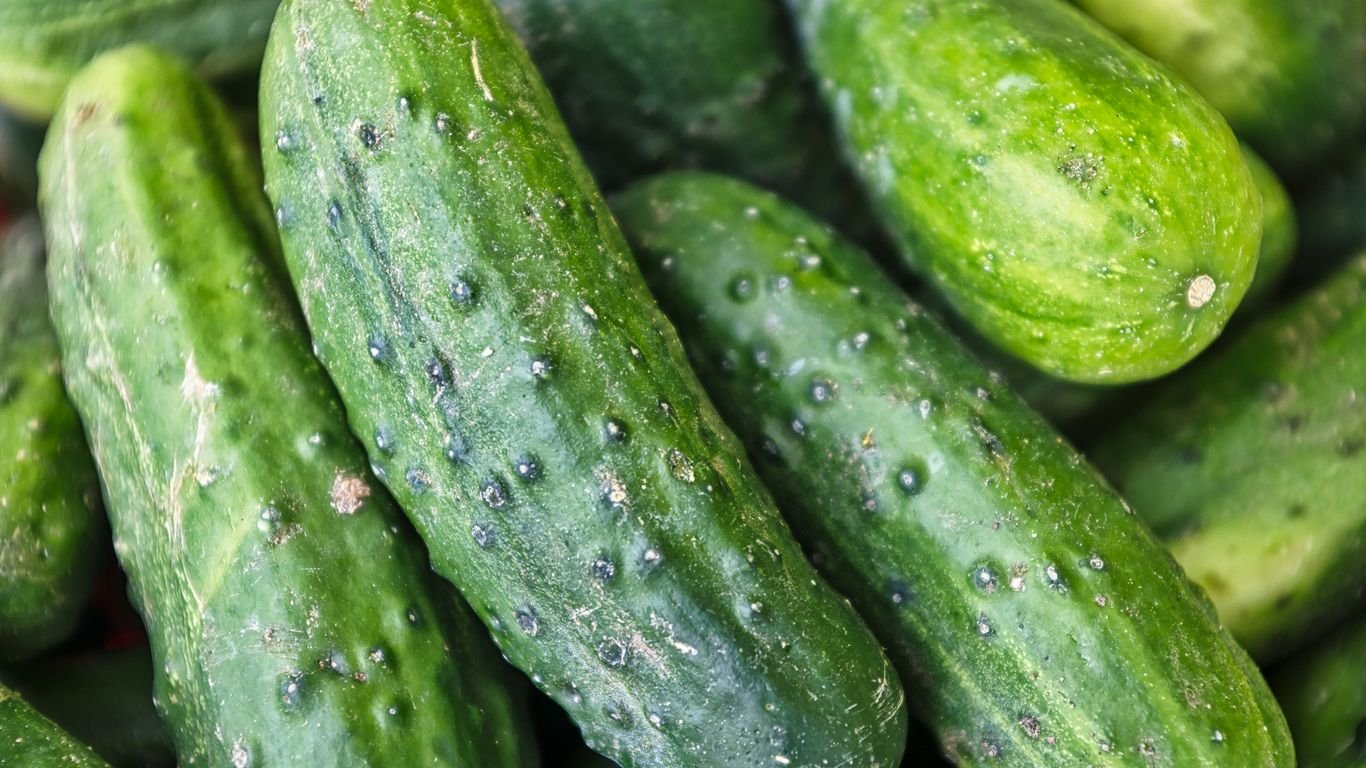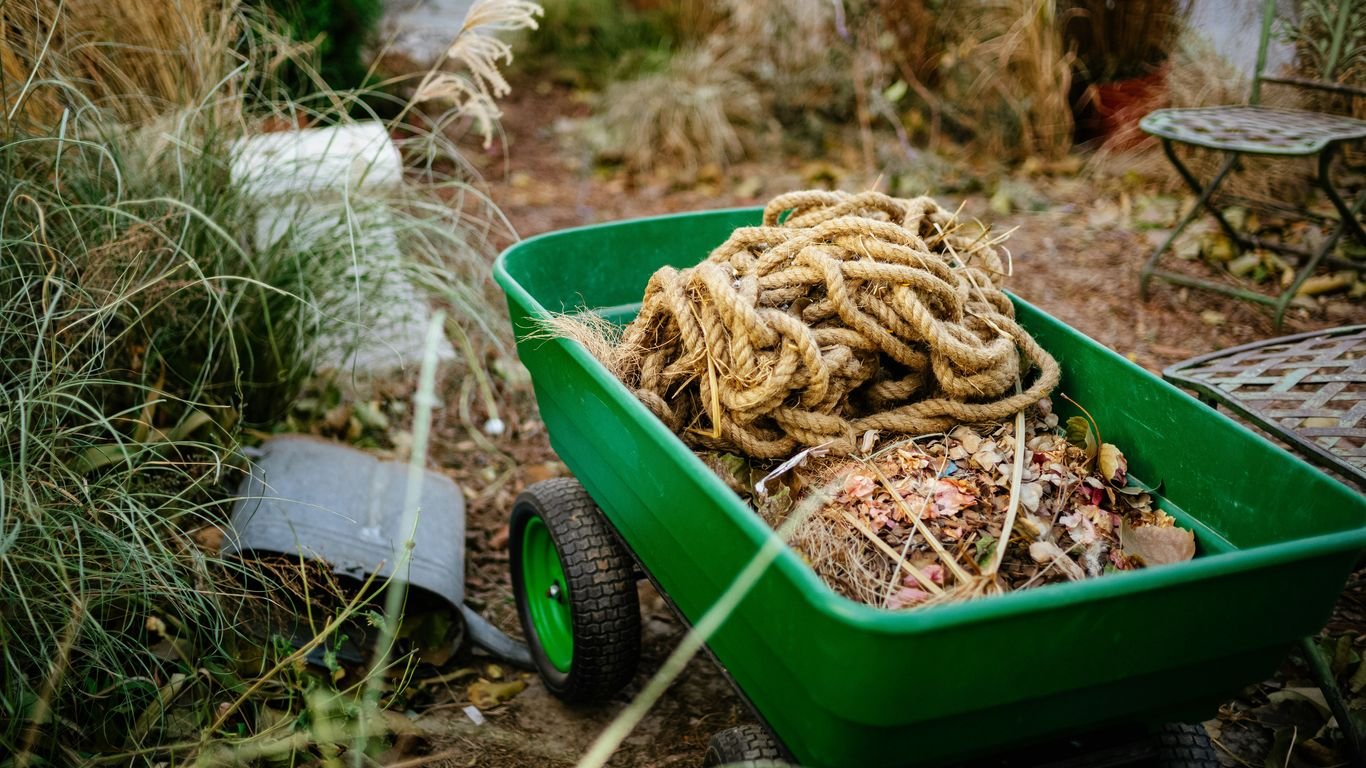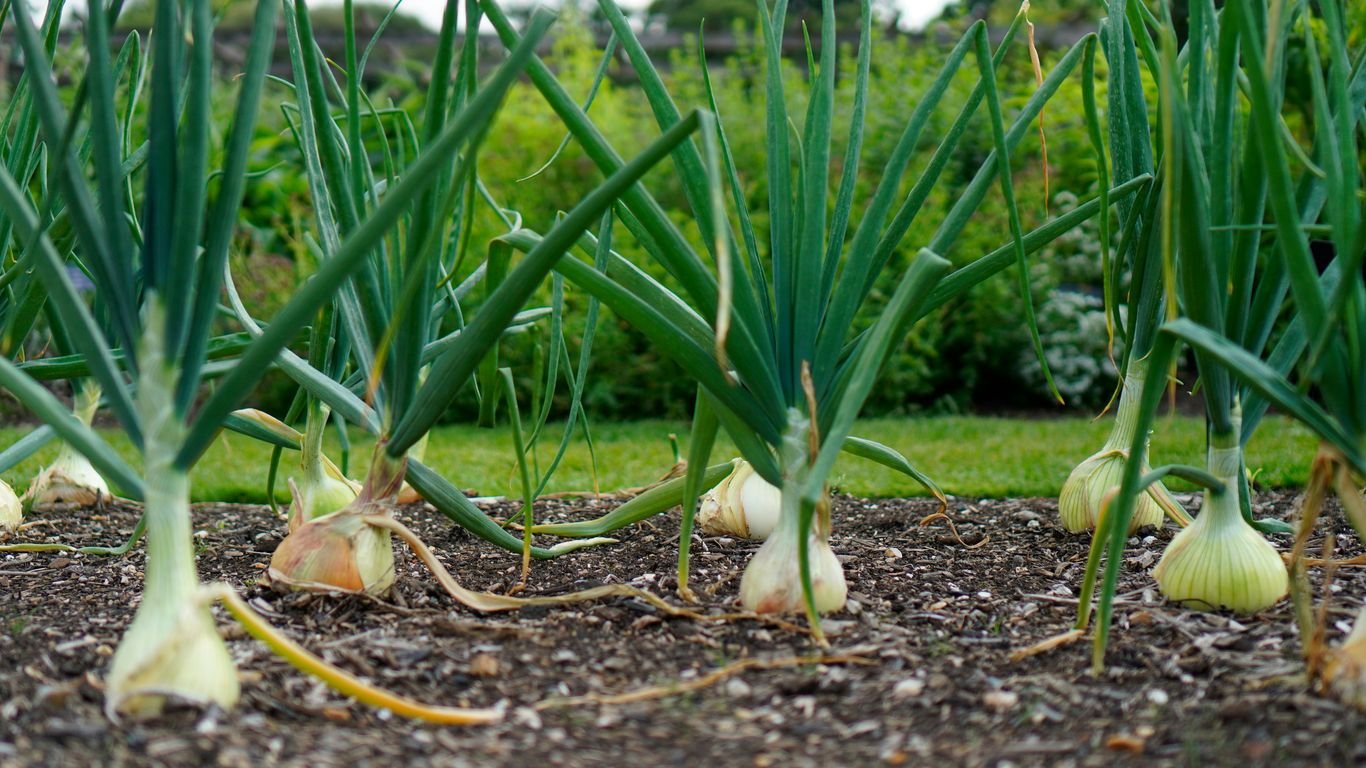July Canning Calendar: Peak Summer Fruits and Vegetables

July is a fantastic month for anyone who loves to preserve food. The gardens and local markets are bursting with so much goodness, it’s almost overwhelming! We’ve put together a little guide to help you make the most of the bounty with our July canning calendar. Think juicy tomatoes, crisp cucumbers, and all sorts of berries. It’s the perfect time to fill those shelves for the leaner months ahead. Let’s get preserving!
Key Takeaways
- July is prime time for canning, with an abundance of fruits and vegetables ready for preservation.
- Tomatoes and cucumbers are stars of the July harvest, perfect for canning whole, crushed, or for pickles and relishes.
- Berries like raspberries and blueberries are ideal for jams and jellies, while stone fruits such as peaches and apricots can be canned sliced or diced.
- Don’t forget about summer vegetables like corn, peppers, and zucchini, which can be turned into relishes, jellies, or sauces.
- Planning your July canning calendar involves assessing your needs, gathering supplies, and making the most of every bit of your harvest.
July’s Bounty: What’s Ripe for Canning

July is when our gardens and local markets really start to show off! We’re talking about a serious abundance of produce, and it’s the perfect time to get our canning efforts into high gear. This month is all about those summer superstars that we love to preserve for later. It’s a fantastic time to capture the peak flavors of the season.
Juicy Tomatoes Take Center Stage
Tomatoes are undeniably the stars of July canning. Whether you’re growing them yourself or picking them up by the bushel, they’re incredibly versatile. We can use them for everything from simple crushed tomatoes for pasta sauces to chunky salsas and even homemade ketchup. Don’t forget about making tomato paste – it’s a game-changer for adding depth to winter soups and stews. We usually aim to can a mix of whole tomatoes, diced tomatoes, and sauces to cover all our bases.
Crisp Cucumbers for Pickling Perfection
While we might enjoy some cucumbers fresh in salads, July is also prime time for pickling. We love making classic dill pickles, but we also experiment with bread-and-butter pickles for a sweeter tang. Relish is another great way to use up a surplus of cucumbers, perfect for topping hot dogs or burgers. It’s amazing how a simple cucumber can be transformed into so many different delicious things!
Sweet Corn for Relishes and More
Sweet corn is usually hitting its stride in July, and it’s wonderful for canning. While we sometimes freeze corn kernels, canning corn relish is a real treat. It’s a chunky, flavorful condiment that’s great with grilled meats or as a side dish. We also pressure can plain corn kernels to have on hand for adding to casseroles or side dishes throughout the year. Just remember to follow proper canning procedures for corn, as it’s a low-acid vegetable.
Berry Good Canning in July
July is a fantastic month for us canners, especially when it comes to berries. We’re talking about those vibrant, juicy fruits that are at their absolute peak. This is the time to capture that summer sweetness to enjoy all year long.
Raspberries and Blueberries: Jams and Freezing
Raspberries and blueberries are practically begging to be preserved in July. We love making big batches of jam because it’s such a straightforward way to keep their flavor. A good raspberry jam is perfect on toast, scones, or even swirled into yogurt. Blueberries are equally versatile; their jam is a classic, but we also like to make blueberry pie filling to stash away for a quick dessert later. If you have an abundance, simply washing and freezing whole blueberries is a great option too. They’re wonderful for smoothies, muffins, or pancakes straight from the freezer.
- Jam Making: Look for recipes that use a low-sugar or no-pectin method if you want to really taste the fruit. Remember that underripe fruit has more natural pectin, which can help with setting your jam.
- Freezing: For freezing, spread clean, dry berries in a single layer on a baking sheet before transferring them to freezer bags. This prevents them from clumping together.
- Other Ideas: Don’t forget about blueberry syrup or even a simple blueberry sauce for ice cream.
Cherries: Sweet or Tart Preserves
Cherries, whether sweet or tart, are another July gem. We find that sweet cherries are wonderful for making preserves or canning them whole in a light syrup. Tart cherries, on the other hand, are fantastic for pie fillings or a tangy jam. If you’re feeling adventurous, a cherry-almond butter is also a delicious way to use them up. We often find ourselves with more cherries than we know what to do with, so having a few go-to cherry recipes is key.
Apricots and Peaches: Sliced and Diced
As July progresses, apricots and peaches start coming into their own. These stone fruits are perfect for canning in slices or chunks. We often pack them in light or heavy syrup, depending on how sweet we want them. They’re great for snacking, adding to oatmeal, or using in cobblers and pies. If you have a lot, consider making a peach or apricot butter, which is a wonderfully concentrated way to enjoy their flavor. We’ve found that canning these fruits is a rewarding way to extend their season.
Canning these summer fruits means you can bring a taste of sunshine to your table even in the dead of winter. It’s a little bit of effort now for a lot of deliciousness later.
Vegetable Harvests for Your July Canning Calendar
July is a fantastic month for us canners because so many of our favorite vegetables are hitting their stride. We’re talking about those garden staples that make meals all year round.
Peppers: From Jelly to Hot Sauce
Peppers are really coming into their own in July. Whether you’ve got sweet bell peppers or fiery hot varieties, there’s a lot we can do with them. We love making pepper jelly – it’s surprisingly easy and makes a great gift. For those who like a kick, hot sauce is a must. It’s a great way to use up a lot of peppers at once. Don’t forget about roasting them and freezing them for later use, or dicing them up to add to other dishes.
Summer Squash and Zucchini Creations
Oh, zucchini. It seems like we always have more than we know what to do with in July! Slicing it and canning it is a good start, but we also like to make zucchini relish. It’s a nice way to preserve that fresh garden flavor. We’ve found that shredding it and adding it to muffins or breads before freezing is also a great option if canning isn’t your main goal.
Beans: Dilly Beans and More
Green beans are another July star. We’re big fans of dilly beans – they’re so crisp and flavorful, perfect for snacking or adding to salads. Canning them is straightforward, and they keep well. Beyond dilly beans, we also can plain green beans to have on hand for side dishes throughout the year. It’s always good to have a few different ways to preserve them.
It’s important to process your vegetables quickly after harvesting to maintain the best quality and flavor. Don’t let them sit around too long before you get them into jars or the freezer.
Here’s a quick look at what we’re usually canning with these veggies in July:
- Peppers: Pepper jelly, hot sauce, roasted and frozen, diced and frozen.
- Summer Squash/Zucchini: Sliced and canned, relish, shredded and frozen.
- Beans: Dilly beans, plain canned beans.
Beyond the Basics: Other July Canning Stars

While tomatoes, corn, and berries often steal the spotlight in July, we can’t forget about some other fantastic contenders for our canning jars. These often-overlooked gems can add a unique twist to our pantries and offer delicious ways to preserve the season’s abundance.
Tomatillos for Salsa and Sauces
Don’t let their papery husks fool you; tomatillos are a canning powerhouse, especially for salsa lovers. Their tart, slightly citrusy flavor is perfect for creating vibrant salsas that are miles better than anything store-bought. We like to make a big batch of salsa verde, which is fantastic with chips, as a topping for tacos, or even stirred into scrambled eggs. You can also cook them down into a tangy sauce that’s great for enchiladas or as a base for other dishes.
- Tip: When canning salsa, always follow tested recipes to ensure safety, especially when dealing with acidity levels.
Melons: A Sweet Surprise
Canning melons might sound a bit unusual, but it’s a delightful way to capture that sweet, refreshing taste of summer for later. Cantaloupe and honeydew are good candidates. We usually slice them and can them in a light syrup. They’re wonderful served chilled as a simple dessert, added to fruit salads, or even blended into smoothies. It’s a fun way to enjoy a taste of summer when the weather turns cooler.
Herbs Like Basil for Pesto
July is prime time for herbs, and basil is a star. While we often use fresh basil all summer long, preserving it means we can enjoy that wonderful aroma and flavor through the fall and winter. The most popular way we do this is by making pesto. We’ll blend fresh basil with garlic, pine nuts, Parmesan cheese, and olive oil, then freeze it in small portions or ice cube trays. This makes it super easy to grab a bit of summer sunshine for pasta dishes, sandwiches, or dips anytime.
- Pesto Prep:
- Wash and thoroughly dry your basil leaves.
- Combine basil, garlic, nuts, and cheese in a food processor.
- Slowly stream in olive oil until you reach your desired consistency.
- Portion and freeze or refrigerate for immediate use.
Planning Your July Canning Calendar
Alright, so we’ve talked about all the amazing things we can can in July, but how do we actually get it all done? It’s easy to get swept up in the excitement of fresh produce, but a little planning goes a long way. We don’t want to end up with a mountain of zucchini and no plan, right?
Assessing Your Pantry Needs
Before we even think about washing jars, let’s take a peek at what we actually use from our pantry. It’s great to can a ton of something, but if it just sits there collecting dust, what’s the point? Think about your family’s favorite meals. Do we go through a lot of diced tomatoes for chili? Are we always wishing we had more pickles for sandwiches? Focus on canning the staples that you know you’ll eat. It’s better to have a few jars of something you’ll use than a whole shelf of something you won’t. We can always try a new recipe or two, but our main canning efforts should be on what we know we’ll enjoy.
Gathering Your Canning Supplies
Okay, so we know what we want to can. Now, do we have the gear? This is where we check our inventory. We’ll need:
- Jars: Make sure they’re clean and free of any chips or cracks. Those little nicks can be a problem for sealing.
- Lids and Rings: Always good to have extras. Lids are a one-time use, so stock up!
- Canning Utensils: Things like jar lifters, funnels, and headspace tools are super handy.
- Large Pots and Water Bath Canner/Pressure Canner: Depending on what you’re preserving.
- Pantry Staples: Don’t forget things like pickling salt, sugar, pectin, or citric acid. It’s a pain to run to the store mid-canning session when you realize you’re out of something.
Maximizing Your Harvest
Sometimes, the garden or the farmer’s market just gives us more than we expected. That’s a good problem to have! If you get a surprise windfall of peaches, for example, have a plan ready. Maybe you planned to can them sliced, but if you have a ton, you could also make jam or pie filling. Don’t let good produce go to waste. If something isn’t quite perfect for canning whole, consider if it can be used in a relish, sauce, or even frozen for later. Flexibility is key here. We want to capture that peak-season flavor, and sometimes that means adapting our plan a little.
It’s also a good idea to keep a running list of what worked and what didn’t from previous canning seasons. Did that one recipe for spicy tomato jam turn out amazing? Write it down! Did the pickled beets turn out a bit too mushy? Make a note to adjust the processing time next year. This helps us learn and get better with every batch.
Wrapping Up Our July Canning Adventures
So, that’s a wrap on our deep dive into July’s bounty! We’ve seen how packed this month is with amazing produce, from juicy tomatoes to crisp cucumbers and sweet berries. It’s really the heart of summer, and the perfect time to get those jars filled. Don’t forget to jot down what worked best for you this month, so you’re even more prepared for next year. Happy canning, everyone – we’ll see you next month for more seasonal preserving!
Frequently Asked Questions
What kinds of fruits and veggies are best for canning in July?
July is a fantastic month for canning! We see lots of juicy tomatoes, crisp cucumbers perfect for pickles, sweet corn for relishes, and a wide variety of berries like raspberries and blueberries. Stone fruits like peaches and cherries are also at their best, along with summer squash and peppers.
We’re new to canning. What are the most important supplies we’ll need for a July harvest?
To get started, you’ll definitely need canning jars in various sizes, new lids and bands for each batch, a large pot or water bath canner, a jar lifter to safely move hot jars, and a funnel to fill them without making a mess. Don’t forget your favorite recipes and a way to keep track of what you’re doing!
How do we know if our canned goods are safe to eat?
Safety is super important! Always follow tested recipes from reliable sources. Make sure your jars seal properly after processing – the lid should be curved down and shouldn’t flex when pressed. If a jar seal looks broken, or if the food inside looks or smells strange, it’s best to toss it.
What’s the difference between water bath canning and pressure canning, and when do we use each?
We use water bath canning for high-acid foods like fruits, jams, jellies, and pickles. For low-acid foods, such as vegetables (like corn and beans) and meats, we need a pressure canner. The higher temperatures from pressure canning are necessary to kill harmful bacteria that can grow in these foods.
We ended up with more tomatoes than we know what to do with! What are some easy ways to can them?
Tomatoes are incredibly versatile for canning! You can can them whole, crushed, or as a sauce. Making salsa is also a great option, and it uses up other July goodies like peppers and onions. Just be sure to follow a tested recipe for the best results.
What if we have some produce that didn’t quite make it into the canner?
Don’t let good food go to waste! If some items are a bit too soft or bruised for canning, consider making them into sauces, soups, or even dehydrating them. Anything that’s truly past its prime can be composted. It’s all about using your harvest wisely!






